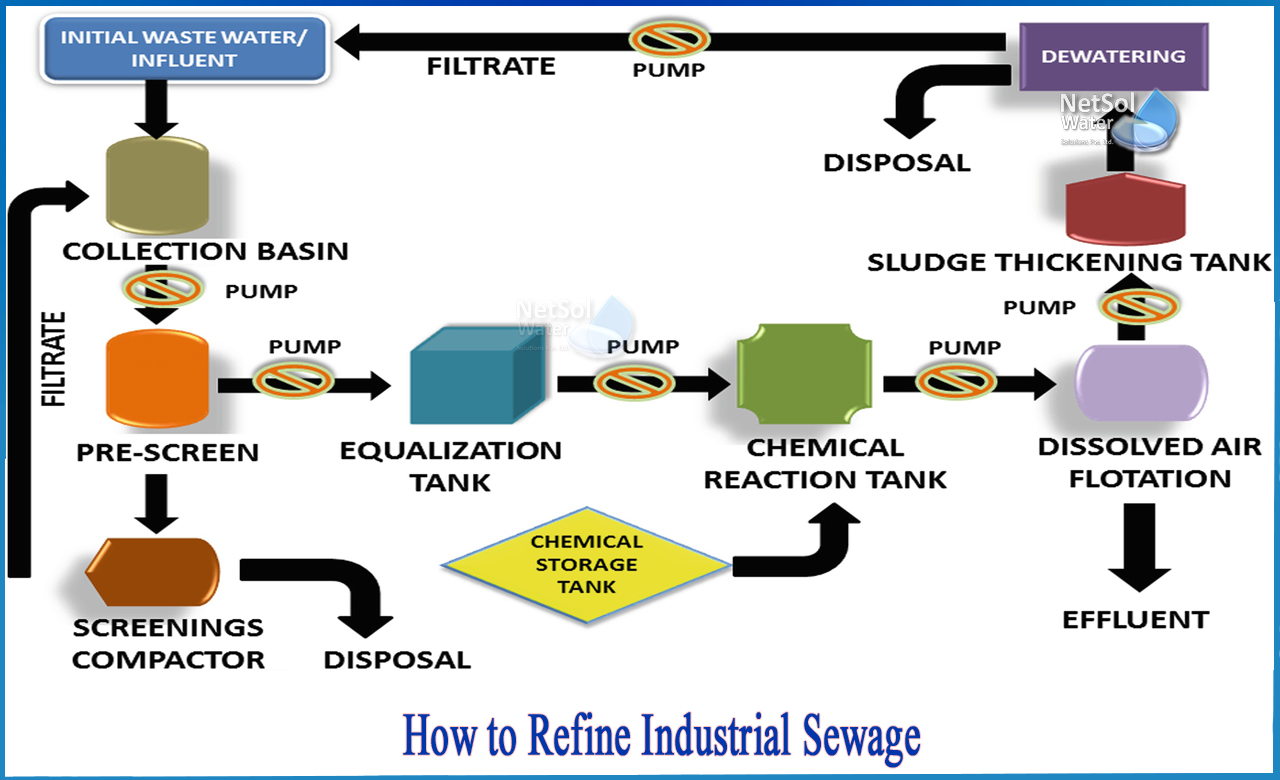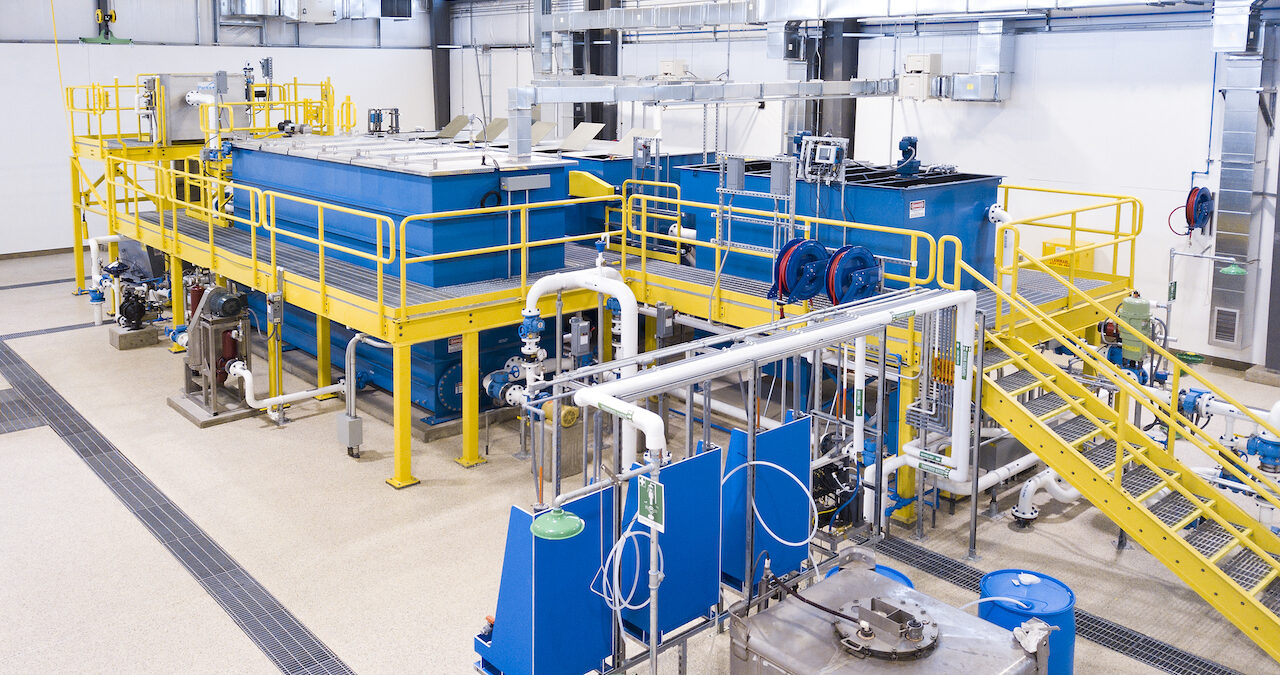Industrial Waste Water Treatment-- Tailored Solutions for Effective Wastewater Treatment
Industrial Waste Water Treatment-- Tailored Solutions for Effective Wastewater Treatment
Blog Article
Key Techniques in Industrial Waste Water Therapy Procedures
The treatment of commercial wastewater is a crucial aspect of ecological administration, involving a series of methods designed to minimize the impact of impurities. From the essential physical approaches that separate solids to the innovative chemical and biological procedures that target particular toxins, each method plays a vital duty in achieving water high quality standards. In addition, innovations in technologies such as membrane layer filtration and advanced oxidation procedures provide cutting-edge solutions for improving therapy efficacy. Comprehending just how these approaches interconnect and their ramifications for sustainability raises vital questions about the future of wastewater administration in sector.
Physical Treatment Methods
How effectively can physical treatment techniques deal with the complexities of commercial wastewater? Physical therapy approaches play a pivotal role in the preliminary stages of wastewater administration, focusing mainly on the removal of solids and big particulates. Methods such as filtering, flotation protection, and sedimentation are important for minimizing the focus of suspended solids, thereby improving the efficiency of succeeding therapy processes.
Sedimentation involves the gravitational settling of solids, permitting for the separation of larger materials from the wastewater. This method is specifically efficient in making clear water prior to chemical or organic treatments.
In addition, flotation approaches, which utilize air bubbles to raise suspended solids to the surface area for elimination, are efficient in dealing with wastewater with high concentrations of fats, oils, and oils. Overall, physical therapy methods act as a crucial initial step in the detailed monitoring of commercial wastewater, guaranteeing that the tons on succeeding treatment phases is decreased and improving total treatment effectiveness.
Chemical Therapy Techniques
While physical treatment methods lay the foundation for efficient wastewater management, chemical treatment techniques are crucial for attending to the much more intricate pollutants often found in commercial effluents. These techniques utilize different chemical agents to precipitate, counteract, or oxidize dangerous substances, making sure a more detailed removal of toxins.
One common technique is coagulation and flocculation, where chemical coagulants such as light weight aluminum sulfate or ferric chloride are contributed to advertise the gathering of put on hold fragments. This process improves solid-liquid splitting up, decreasing turbidity and boosting water quality. Furthermore, neutralization procedures are employed to adjust the pH of wastewater, utilizing bases or acids to neutralize acidic or alkaline streams, respectively.
Oxidation-reduction responses play an essential function in derogatory natural contaminants and microorganisms. Chemical oxidants like chlorine, hydrogen, or ozone peroxide are used to damage down intricate organic compounds, making them less dangerous or extra biodegradable. Additionally, progressed oxidation procedures (AOPs) incorporate numerous oxidation techniques to enhance contaminant elimination performance.
Biological Treatment Processes
The effectiveness of wastewater treatment is considerably improved by biological treatment processes, which harness the all-natural metabolic tasks of microbes to decay natural issue and get rid of toxins. Industrial Waste Water Treatment. These procedures mainly include aerobic and anaerobic digestion, each customized for details sorts of wastewater
Cardiovascular treatment processes utilize oxygen to support microbial development, advertising the malfunction of natural contaminants into co2 and water. Usual techniques consist of activated sludge systems, where aeration containers assist in the mixing of wastewater with microorganisms, and trickling filters, which urge biofilm growth on media surfaces.
On the other hand, anaerobic treatment procedures occur in the lack of oxygen, using anaerobic bacteria to decay natural matter, causing biogas production, a renewable power source. Anaerobic digesters are often used in industrial settings for this function, efficiently reducing the quantity of sludge while producing beneficial biogas.
The choice of a biological therapy method relies on wastewater qualities, therapy goals, and regulatory standards. The integration of biological processes in wastewater therapy not just boosts toxin elimination performance but additionally promotes sustainability by decreasing chemical usage and supporting resource recuperation.
Advanced Oxidation Processes

Usual AOP strategies consist of Fenton's reagent, ozonation, and photocatalysis. Fenton's reagent, a mix of hydrogen peroxide and ferrous iron, militarizes the formation of hydroxyl radicals, making it reliable for treating wastewater having phenolic compounds and various other stubborn materials. Ozonation utilizes ozone as a powerful oxidant, qualified of breaking down a large range of natural pollutants while at the same time sanitizing the effluent. Photocatalysis utilizes light-activated catalysts, such as titanium dioxide, to boost oxidation responses and eliminate pollutants.
AOPs supply several advantages, including decreased sludge manufacturing and the capacity to deal with wastewater with high concentrations of organic pollutants. The implementation of AOPs calls Look At This for mindful factor to consider of operational parameters and cost-effectiveness, ensuring that these advanced strategies are appropriately integrated right Recommended Site into existing wastewater treatment systems.
Membrane Layer Filtration Technologies

Microfiltration works for removing suspended bacteria and solids, while ultrafiltration targets smaller sized natural particles and infections. Nanofiltration links the void between ultrafiltration and turn around osmosis, effectively eliminating organic compounds and divalent ions. Reverse osmosis gives the highest degree of purification, utilized mostly for desalination and removing mono-valent ions.
Membrane modern technologies provide various benefits, including low power consumption compared to traditional therapy techniques, modular style for scalability, and the capacity for water healing and reuse. Difficulties such as membrane layer fouling and the demand for routine upkeep need to be addressed to guarantee system efficiency. In general, membrane layer purification modern technologies represent a crucial part of contemporary industrial wastewater therapy techniques, advertising sustainability my link and resource preservation in water administration.
Final Thought
In final thought, commercial wastewater treatment uses a diverse range of strategies, consisting of physical, chemical, organic, and progressed approaches. Continued improvements in these techniques will certainly additionally boost the performance and efficiency of wastewater treatment procedures in commercial settings.
The therapy of commercial wastewater is a crucial aspect of environmental administration, entailing a variety of strategies created to mitigate the effect of pollutants.Just how properly can physical treatment methods attend to the complexities of commercial wastewater?Advanced oxidation procedures (AOPs) represent a sophisticated strategy in industrial wastewater therapy, made to successfully weaken natural toxins that are often resistant to conventional treatment techniques (Industrial Waste Water Treatment).In final thought, commercial wastewater therapy employs a varied array of methods, consisting of physical, chemical, organic, and advanced methods. Continued developments in these techniques will additionally boost the efficiency and performance of wastewater treatment procedures in industrial setups
Report this page